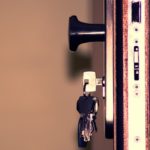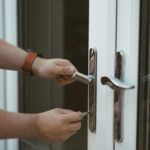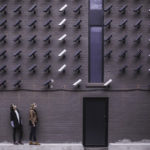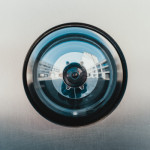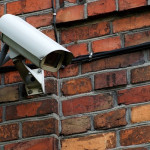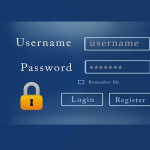Security Tips For Your Home
Summer is here and many of us are planning and going on vacations, leaving homes unoccupied and prime targets for burglars. Don’t be a victim – be sure your home is protected whether you are work or away on a trip. Here are a few simple ways to keep your home safe this summer and year-round.
- Lock Doors & Windows
It should be a habit by know, but sometimes we may forget. Before leaving your home or going to bed, be sure to lock the doors and windows of your home. Some smart home devices may even allow you to lock your doors remotely in case you forget, or if an authorized guest needs to access your home while you’re away. - Use A Home Security System
A home security system is a great defense against burglaries. The mere presence may make burglars think twice about targeting your home. These days, there are various systems available to suit different homes and budgets. If you need assistance choosing the right system for you, give us a call 888-203-6294. - Check The Locks
Much like every other area of your home, locks need maintenance, too. For the best security, install deadbolt locks on outside doors, and use the appropriate locks on sliding doors. Don’t forget to secure any pet doors before leaving as well. - Always Occupied
Your house should always appear occupied, whether you’re home or not. If you are away, use a timer to turn lights on and off to make it appear that someone is home. - Reduce Shrubbery
Don’t make it easier for burglars to hide on your property. Keep your shrubs and trees trim, especially those near upper levels and windows. - Secure Your Garage
Secure your garage like you do with your home. With the exception of detached garages, the garage has an entrance into your home and is a common target for burglars because it is often overlooked. The door leading to your garage should have a lock (a deadbolt for added security) and it is wise to park inside to make it hard to tell whether you’re home or not. - Lights
Use exterior lights to illuminate your perimeter. Motion sensing lights can be helpful for dark areas of your lawn, too. - Mail
If you’re going n vacation, stop your mail delivery or have someone pick it up. Built up mail is a tell tale sign that no one is home. - Outdoor Wires
Telephone lines and electrical wires should not be easily accessible. If these are exposed and easy to get to, intruders will attempt to disarm systems by cutting the wires. - Change The Locks
If you lose your keys, move to a new home, or have someone move out of your home, change the locks on the doors.
Share your home safety hacks with us on Facebook, Twitter, LinkedIn, and Pinterest. You can browse our stock of quality surveillance equipment and security cameras online at SecurityCamExpert.com. Contact us at 888-203-6294 to request a free quote or schedule a site survey.
Avoid These Surveillance Mistakes
Installing a home surveillance system can be rewarding, providing you a sense of security and peace of mind. However, the process of choosing, installing and using the right cameras is a delicate task. It’s important to evaluate your needs, understand what features will help you accomplish your goals, and execute installation and use correctly. Avoid errors in the process by reviewing these common security camera mistakes.
- Mistake: Forgetting to secure indoor and outdoor surveillance cameras.
If you fail to secure your surveillance cameras, they can be susceptible to tampering and vandalism. To keep your equipment safe, install your cameras at least 9 feet above the ground. You may also want to consider investing in vandal proof and weather proof housing, especially for outdoor cameras. - Mistake: Thinking cameras are able to multitask.
They cannot. When you are installing your security cameras, you must think of the task you want your camera to perform and where to place it. Prepare a diagram for your home security system so you can plan out camera placement. This will also allow you to figure out how many and what type of cameras you need for optimum security. - Mistake: Placing cameras at the highest point.
While this tactic will give you a larger view, you will not a get a detailed look at any person’s features, making it impossible to identify potential criminals. You may want to try a PTZ (pan/tilt/zoom) security camera which allows you to view large areas while enabling zoom for a more detailed look without compromising quality. - Mistake: Using cameras without Wide Dynamic Range at doorways and windows.
Wide Dynamic Range (WDR) plays a big role when part of an image is extremely dark but another part is bright. Since lighting conditions indoors and outdoors can vary drastically, this feature is especially essentials for cameras near windows and doorways. - Mistake: Failing to provide enough lighting.
If you require night time monitoring, you should invest in night vision security cameras. However, if your camera does not have night vision, be sure to provide enough lighting so that your cameras can record clear footage. Remember, putting cameras too close to bright lights will cause the picture to be disrupted. Also, if an outdoor camera is pointing to direct sunlight, this will cause stripes in the images.
Have any security mishaps or tips to share? Connect with us on Facebook, Twitter, LinkedIn, and Pinterest.
SecurityCamExpert.com offers quality surveillance equipment along with expert installation! Visit us online to browse our stock or call 888-203-6294 to request a FREE quote or schedule a site survey.
Secure Your Home
When was the last time you evaluated your home security? With summer, and likely a vacation or two, around the corner, now is a great to time reassess your home security measures and upgrade or improve them as needed.
Doors
A surprising amount of burglars enter homes through the front door, so be sure that all of your doors (especially the front door) are strong and secure. Inspect the door frame, ensure the hinges are protected, and if your door has a mail slot, make sure someone can’t reach through and unlock the door.
To further safeguard your doors and entryways, you can install a deadbolt and/or add a strike plate. You can even upgrade to smart locks or install a doorbell camera. And if you have any sliding glass doors, remember to reinforce them by using a window bar or dowel in the track. Or you can invest in a door sensor or glass break sensor, which will alert you if the door is opened or tampered with.
Windows
Another common entry point for burglars is windows. And unfortunately, window latches and locks can be flimsy and rather ineffective. To better secure your windows, install improved locks or key-operated levers, or implement window bars. You can even reinforce the glass with window security film and install window or glass break sensors. In addition, you can plant prickly bushes under first-floor windows, but be sure to keep them trimmed.
Lighting & Landscape
Intruders want to be as inconspicuous as possible, so why not shine a light on them? Outdoor lighting can help to keep burglars at bay. Light up your yard (front and back) and pathways and place lights near the garage or other outdoor structures. Motion-activated lighting, solar-powered lights and timers can be helpful as well.
While the lights help to prevent burglars from hiding in the darkness, maintaining your landscape plays an important role, too. Be sure that trees and shrubs are trimmed down to eliminate any hiding spots. If there are trees near windows, remove them or add extra security to those windows. And remember to put away stools, ladders, and other tools and lock your gates and sheds.
Garage
An attached garage offers another way to access your house. But even if it is detached, burglars know there’s likely good stuff stored in there. You should always lock all doors to the garage, both interior and exterior. Consider keeping your garage door opener in the house. That way, a burglar can’t steal it from your car. You may even consider upgrading to a smart garage door opener, which alerts you when the door is opened or closed and enables you to control it remotely.
Wi-Fi Network
Securing your home wireless network is also an important part of your overall home security. To keep hackers off your home network, be sure to secure your wireless router and enable WPA (Wi-Fi protected Access) or WPA2 encryption. You should also rename and hide your network, use a firewall, install antivirus and anti-malware protection, and always create strong passwords and change them periodically.
Security System
These days, you can find a home security system that suits your needs and budget. Depending on your unique situation, you may consider DIY versus professional installation, along with the upfront and monthly costs, and the different features offered.
If they are not part of your security system, you may want to install security cameras outdoors, indoors, or both. Some features to look for include remote access, motion detection, night vision, and Wi-Fi capability. If you need assistance, you can visit SecurityCamExpert.com or call us at 888-203-6294.
Your security is our priority. Contact us to learn more about our products and installation services, site surveys, or to request a FREE quote! You can also connect with us on Facebook, Twitter, LinkedIn, and Pinterest.
Hiding Security Cameras
Despite the presence of security cameras being a visual deterrent for potential burglars, some home owners would rather conceal their surveillance system. When security cameras are present, intruders may often attempt to damage or disable them, so hiding them may help to keep them safe. Visible security cameras can also be an eyesore, and may make it a bit awkward when you have guests over.
However, if you’re going to conceal your security cameras, be sure to abide by the laws in your country and state. To be safe, you may want to consult with an attorney about legalities and the specific ways you plan to use your hidden cameras.
Here are some clever ways you can hide your security cameras.
- Plants
Whether real or fake, hiding a camera in a potted plant is a great idea. Plants are a great way to liven up a room and not many would suspect to find a camera hiding there. Just be sure that the view is not obstructed by leaves or other parts of the plant. - Bookshelf
Not many burglars dart to the bookshelf when breaking and entering. You can place a small camera in a section that is rarely accessed, or even toward the top shelf for a better viewing angle. - Birdhouse
For outdoor security, you can hide a security camera in a birdhouse. Because there is often a restricted view with this, be sure to aim the birdhouse at the area you wish to monitor. - Box Of Tissues
Many of us keep tissue boxes around the house so why not hide cameras in there? You can make necessary holes in the box to hide the camera, and position as many as necessary around the home. - Plush Toy
This is a popular choice for nanny cams as you often find plush toys in the child’s bedroom or play rooms. Some hidden cameras are sold as plush toys, or you can do-it-yourself at home. Simply cut a small hole in the back of the toy, position the camera inside the head with the lens aligned with one of the eyes, support the camera with the stuffing and sew up the hole.
Do you have any other hidden camera locations to share? Connect with us on Facebook, Twitter, LinkedIn, and Pinterest.
For the best selection of indoor and outdoor security cameras and surveillance equipment, please visit SecurityCamExpert.com. Aside from our surveillance systems, we also offer installations services, site surveys, and free quotes – call 888-203-6294 to speak with one of our experts today!
Safeguard Your Property
Spring is almost here! With warmer weather on the horizon, many of us may have vacations or weekend getaways planned. Before you leave your house unattended, make sure you’re doing your best to keep your home secure. Here are some helpful home security tips to safeguard your home and property.
Maintain Landscape
Your landscape can be an asset or a weakness to your home security, depending on how you utilize it. To protect your property, you want to limit the potential hiding places that your shrubbery can provide. Consider planting thorny bushes under your windows and be sure to keep them trimmed. You may also want to install motion-activated lights along your landscape to further discourage intruders.
Deter Porch Pirates
While online shopping is convenient, it leaves you susceptible to porch pirates. If you’re having packages delivered to your doorstep, work with the delivery companies to improve security. You can request a text when a delivery is made, require a signature upon delivery, or ask for packages to be left in a less prominent location. Another way to deter package theft is to install security cameras at your front door and around your home to monitor activity.
Hide Valuables
You don’t want anyone passing by your street to be able to see all of your valuables. Instead, arrange your furnishings in a way that they are less visible from the street-side window. Also, keep your garage openers and car keys out of sight from any window. Store these in a cabinet or drawer to keep them hidden.
Reinforce Entry Points
You want to be sure that any point of entry, whether window or door, has the proper protection. Exterior doors should be metal or solid wood and at least 1 ¾ inches thick. Protect your windows with locks or burglar-resistant glass, and reinforce sliding doors with a metal bar. A security alarm can also be beneficial by alerting you when a door or window opens as well as alerting authorities when your system is breached.
Practice Safe Behaviors
Personal habits can play an important role in your home security. Make it a habit to lock your doors and windows and arm the security alarm system whenever you leave. If you’ll be gone for more than a few days or on an extended vacation, you should make it look as if your home is occupied. Leave blinds as they would be usually, plan to defer your mail and other deliveries, and use light timers and smart home devices in different areas of your home. Bonus tip: If you are leaving your keys with a parking attendant, remove your house keys – tech-savvy thieves can duplicate your house keys by simply taking a picture of it.
Share your own home security tips with us and your peers on Facebook, Twitter, LinkedIn, and Pinterest. Browse our wide selection of CCTV security cameras, video surveillance systems and more at SecurityCamExpert.com or call 888-203-6294 today!
Security Cameras: Do’s & Don’ts
Security cameras help to protect homes, businesses and various properties from burglaries, vandalism and more. Unfortunately, if they are not installed properly, they can do more harm than good. Before you invest and install a video surveillance system on your property, review these security camera do’s and don’ts.
DO:
- Place the camera where the roof or ceiling meets the wall.
This spot naturally shields the camera from the elements, and it can usually give you the widest angle of viewing. - Protect your cameras from weather, tampering, and vandalism.
Depending on your security cameras location, you may need to invest in a weatherproof casing to shield it from environmental conditions. Also, be sure to mount your cameras out of reach and with a protective plate to prevent criminals from tampering, disabling, or damaging your equipment. - Securely mount your surveillance cameras.
Be sure that your cameras don’t shake or wiggle if walking or other movement sends vibrations to the wall. This instability could distort the images that your camera is transmitting and could potentially cause damage to your cameras. You may need additional mounting brackets or equipment to ensure your cameras are securely mounted. - Place cameras in heavily-trafficked or shrub-heavy locations.
Because bushes provide cover for intruders, having a camera monitor these potential hiding spots will improve your surveillance. You also want to have eyes on areas with heavy traffic such as walkways or gates. - Set your base unit in your attic.
This is often the most convenient spot for all of your cameras’ wiring to originate from. It also minimizes the need to string cables up and down walls if they can be run on the insides of your eaves under your roofline.
DON’T:
- Just install a camera in an area that won’t be well-lit at night.
If you want surveillance around the clock, be sure that your security cameras have night vision or an infrared setting or lens that works in low light. For outdoor cameras, pair your cameras with exterior lighting with motions sensors if possible. - Attach a camera to a gutter.
This is always a bad idea. Despite being high up and out of reach, the camera is completely exposed to the weather and its weight will put undue stress on your guttering system. - Limit your cameras to just your front door.
You should be monitoring all areas where criminals can potentially gain access. Install surveillance cameras near your back doors, side entrances, and sliding glass entryways. You may want to consider a security camera at the top of your basement stairs in case someone gains access to your basement. - Place a camera right above a basement window.
This location leaves your camera within reach to be disabled or vandalized. Instead, mount a camera under the eaves or even a second-story roofline and direct the lens toward the basement window. - Assume wireless means “completely wireless.”
This is not always the case. Even if your surveillance system operates using wireless signals, each camera and your base unit will still need to be plugged into a power source.
Share your own tips with us and your peers on Facebook, Google+, Twitter, LinkedIn, and Pinterest.
Your security is our priority! If you need help choosing the best security cameras for you, feel free to browse our selection online at SecurityCamExpert.com or call 888-203-6294 to speak with a representative directly.
Protect Your IP Surveillance System
These days, IP security cameras are much easier to use and are more commonly utilized for home security. Whether home owners want to watch their property or their pets, IP security cameras seem to be the surveillance solution of choice.
Unfortunately, these home security systems are often targeted by hackers and bots. To better safeguard your IP cameras and privacy, check out these helpful IP security camera tips.
Update Firmware
Modern IP security cameras provide user-upgradeable firmware. When a security vulnerability is found, the manufacturer will fix it by issuing a firmware update. If your cameras are operating with an older version, they may be vulnerable to exploitation from hackers or online voyeurs. Always be sure that your firmware is up to date and routinely check for updates to protect your system.
Keep Cameras Local
The concept is simple – If you are worried about your live feed ending up on the internet, do not connect your cameras to the internet.
To protect your privacy, keep your security cameras on a local network and assign them non-routable internal IP addresses (ex. 192.168.0.5 or the like). But even then, your cameras may still be exposed by camera software that sets up port forwarding or uses UPNP to expose your cameras to the internet. Make sure your cameras are set up on local-only mode – consult your installer or check the manufacturer’s website to learn how.
Assign Passwords To Cameras
All too often, users forget to add password protection on their IP cameras, and sadly, this is not usually turned on by default. Without this, IP cameras are left wide open and vulnerable.
Luckily, most cameras offer at least some form of basic authentication, and although it may not be much, it is better than nothing. Remember to protect your cameras by assigning a username and strong password and changing it periodically.
Change Defaults
We cannot stress this enough – Always, always, ALWAYS change the default usernames and password for your devices. In case you didn’t know, the default admin name and password for your IP camera is usually available on the manufacturer’s website in the support section. That said, if you don’t change these defaults, anyone could potentially access your security system, view your feeds, and control your cameras.
WPA2 Encryption
If you’re using a wireless camera, you should only connect it to a WPA2-encrypted wireless network. This will minimize the risk of wireless eavesdroppers connecting to your network and accessing your video feeds.
Be Mindful Of Locations
Don’t place IP security cameras in areas of your home that you wouldn’t feel comfortable with strangers seeing. Regardless of the security measures to protect your camera feeds, there is always a possibility of getting blind-sided by a Zero-Day vulnerability that hasn’t been found by the manufacturer yet.
Share your own tips and experiences with us on Facebook, Google+, Twitter, LinkedIn, and Pinterest. For a wide selection of IP security cameras and more, visit SecurityCamExpert.com or call 888-203-6294 today!
CCTV Surveillance Cameras: Maintenance & Troubleshooting Tips
After you purchase and install a home security camera system, it is important to maintain it in order to preserve its quality and performance. From the surveillance cameras to the cables to video storage, all parts must be working properly to ensure optimal surveillance and security. Here are some helpful maintenance and troubleshooting tips for your surveillance system.
Maintenance
- Hard Drives
Check your hard drive regularly by simply playing back recent video. To make sure your cameras are properly recording, check the field of view and filter through different dates and times. Make sure you are getting the proper recording duration. A surefire sign that something is wrong is if the duration of footage stored has significantly decreased. For example, you used to get weeks or months of footage, but now it seems you are only getting a few days worth.
- DVR & Security Cameras
Cooling fans assist in preventing your DVR from overheating. Unfortunately, when they suck in the cool air, dust begins to build up as well. The accumulation of dust can damage the fan, resulting in overheating. Cleaning your cooling fan regularly can prevent this and is relatively easy. Computer dust sprays are available at many computer stores and you simply aim at the vent areas and spray.
The IR (Infrared) lights on your security cameras tend to attract spiders and bugs. Because of this, spiders tend to build their webs around the cameras in order to catch the bugs attracted to the light. Consequently, these spider webs interfere with your videos. Check your playback or live feed to see which cameras are affected. If you cannot kick the problem, it may be better to use cameras without IR and install a separate light source to illuminate the area.
Every so often, you should use a soft cloth or wipe to remove any dust or debris and clean the camera lens. A dust mop with a long handle can help you reach higher mounted cameras that are typically out of reach.
- Day/Night Recording
Camera sensors and other parts can wear out over time and will eventually need to be replaced. In addition, camera connections may need maintenance as environmental factors such as heat, cold, and moisture can affect them. If you see any signs of connections issues, such as lines in the image, flickering or other image issues, you should address these immediately to prevent further damage or total image loss.
Troubleshooting
Issue: Security cameras are out but the DVR is working.
- Restart the camera power box.
- Make sure the power box has power.
- Look for lights on it (sometimes these are inside the box and may be difficult to see).
- Many larger boxes have fans so look for signs of life.
- If these don’t work, schedule a service call as it may be a power box issue (although rare, power boxes sometimes go out).
Issue: DVR or NVR is not reachable by Internet (no phone or computer access).
- Did you reset your router to default or get a new router? If yes, then this needs to be repaired professionally.
- Try restarting your DVR and router as well as any other network devices (ex. network repeaters, adapters). If this does not resolve the issue, you may need professional assistance.
- Check all connections – make sure that the internet connection is firmly in place behind the DVR as well as in the router. These can come loose, especially when cleaning around the DVR or relocating something nearby that may have pulled the cord out.
Issue: DVR is not playing back video.
- Try rebooting the DVR (the rule of thumb for any issue with electronics).
- If that does not work, it may be a bad hard drive. Check the DVR and see if the hard drive is showing up in the settings. If not, this is a definite issue and you will need to replace your hard drive.
If you need help choosing the right security cameras for your property as well as installation services, feel free to contact us! You may browse our selection online at SecurityCamExpert.com or call 888-203-6294 to schedule a site survey or get a free quote. You can also find us on Facebook, Google+, Twitter, LinkedIn, and Pinterest.
Avoid These Common Security Camera Mistakes
Whether you rent or own your home, you want to make the property as unattractive as possible. Things like outdoor lighting, guard dogs, alarms and security systems act as deterrents for would-be burglars and trespassers. Unfortunately, common mistakes can weaken your security measures. Discover the most common security mistakes and ways to avoid them.
- Mistake: Hiding Security Cameras
Although they may take away from your home’s aesthetic, your security cameras should be visible from the street. One of the benefits of security cameras is that they act as a deterrent for burglars. By hiding your cameras, you negate that benefit. And even if they do not succeed at discouraging thieves, you will have video footage that can help to identify the trespassers.
But remember, you want the cameras to be visible, but also out of reach to prevent tampering and vandalism. A sign warning that your property is under surveillance can also help.
- Mistake: Camera Positioning/Locations
Choosing the right locations for your security cameras may seem easy, but there are lots of factors to take into account. Security cameras should be able to provide proper coverage around the clock. You need to consider direct sunlight in the afternoon, which can washout the footage, or how things such as rain, snow, or tree branches, may compromise the field of view and produce unusable footage. In addition, internet-connected smart cameras need to be installed where there is strong and consistent Wi-Fi signal.
Keep your camera in a sheltered area that’s in the shade all day. You may even want to invest in camera housing for added protection. Also, test your live feed in a variety of weather conditions to ensure your cameras produce usable footage in all situations.
- Mistake: Buying Cheap Systems
While low-priced systems may seem appealing, often times you get what you pay for. These systems may not come with the special features you want or need, but if budget constraints limit your options, something is better than nothing. However, if you have a more flexible budget, you should be sure your basic needs are met.
The most important takeaway: do your research. Read reviews and users’ feedback, search online for examples of the video output, and look into warranties and technical support should you need it in the future. You should trust that you are investing your time and money into a quality camera that will satisfy your surveillance needs.
- Mistake: Not Changing Passwords
When you have an internet-connected system, you are able to access your feed remotely. A default username and password are used for the initial access. A common mistake is that users do not change these default username and passwords, which are usually available on the manufacturer’s website. Hackers know this and if you fail to change these, they can gain access to your feed. From there, they can learn about your daily routines and get an idea of the layout of your home.
It is strongly advised to change the defaults as soon as possible and create a password that is unique, but that you can remember.
- Mistake: DIY Installations
Professional installation can help you avoid many of the aforementioned mistakes. They will choose appropriate locations for your cameras based on your needs and the environmental factors. If your cameras aren’t functioning properly, they will come back to fix the issue and most companies will offer a warranty. If you opt for a DIY installation, you are responsible for any issues that arise.
Need help finding the right security system for you? Choose SecurityCamExpert.com! We can guide you through the process of choosing the security cameras that will best suit your needs. If you are in Southern California, we can even install the system for you. Visit us online or call 888-203-6294 to learn more. You can also connect with us on Facebook, Google+, Twitter, Linkedin, and Pinterest.
Safety Tips For 4th Of July Holiday
With Independence Day fast approaching, many of us are making plans to celebrate. Whether it’s a family outing to the beach or a fireworks show, or simply a backyard barbecue at home, heed these safety tips to keep yourself and your loved ones safe.
Fireworks Safety
Fireworks are safest when admired from afar (at least 500 feet). Look for local public fireworks displays and try to secure a prime spot early (as these tend to be crowded events). If your city allows fireworks and you decide to light them at home, please follow these safety precautions:
- Keep fireworks away from small children.
- Follow the instructions on the packaging.
- Keep a water supply close by (better safe than sorry).
- The person igniting the fireworks should always wear eye protection.
- Light only one firework at a time.
- Never attempt to relight a “dud.”
- Store fireworks in a cool, dry place and away from children and pets.
- Never throw or point a firework toward people, animals, vehicles, structures, or flammable materials.
- Leave any area immediately where untrained amateurs are using fireworks.
Grilling Safety
What is summer without backyard barbecues? As much as we love grilling under the sun, injuries are all too common when using backyard charcoal or gas grills. To prevent injury and maintain safety, follow these tips:
- A barbecue grill that is in use should always be supervised.
- Never grill indoors (ex. inside a house, camper, tent or any enclosed area).
- Make sure everyone (including pets) stays away from the grill.
- Keep the grill out in the open, away from the house, the deck, tree branches, or anything that could catch fire.
- For the chef’s safety, use the long-handled tools especially made for cooking on the grill.
- Never add charcoal starter fluid when coals have already been ignited.
- Always follow the manufacturer’s instructions when using grills.
Beach Safety
If your beach visit includes swimming in the ocean, be sure to learn how to swim in the surf within the designated swimming area and only when/where a lifeguard is present. In addition, be sure to obey all instructions and orders from lifeguards.
- Check local weather conditions and look for any warning signs or flags that may be posted.
- Always swim sober and with a buddy.
- Young children and inexperienced swimmers should wear Coast Guard- approved life jackets.
- Protect the neck – don’t dive head first. Walk carefully into open waters.
- Keep a close eye and constant attention on children and adults while at the beach. Waves can cause someone to lose their footing, even in shallow water.
- Watch for aquatic life – water plants and animals may be dangerous. Avoid patches of plants and leave animals alone.
Rip Currents
Rip currents are relatively strong, narrow currents flowing outward from the beach through the surf zone, posing a potential hazard to swimmers. In fact, rip currents are responsible for many deaths and lifeguards rescues on our beaches. Any beach with breaking waves may have rip currents, so be aware of the dangers and remember these things:
- If a person is caught in a rip current, it is advised to swim parallel to the shore until out of the current. Once free, turn and swim toward the shore. If they can’t swim to the shore, they should float or tread water until free of the rip current and then head toward the shore.
- Stay at least 100 feet away from piers and jetties – permanent rip currents often exist near these structures.
Sun Protection
You should limit exposure to direct sunlight between 10am and 4pm and wear a broad-spectrum sunscreen with a protection factor of at least 15 (reapply often). Remember to stay hydrated by drinking plenty of water regularly (thirsty or not) and avoid alcoholic or caffeinated drinks. Protect your eyes by wearing sunglasses that will absorb 100 percent UV sunlight. Also remember to protect your feet – hot sand can burn them and glass and other sharp objects can cut them.
During hot weather, watch for signs of heat stroke – hot, red skin; changes in consciousness; rapid, weak pulse; rapid, shallow breathing. If it’s suspected someone is suffering from heat stroke:
- Call 911 and move the person to a cooler place.
- Quickly cool the body by applying cool, wet cloths or towels to the skin (or misting it with water) and fanning the person.
- Watch for signs of breathing problems and make sure the airway is clear. Keep the individual lying down.
Share your own safety tips with us on Facebook, Google+, Twitter, LinkedIn, and Pinterest!
Don’t forget! We will be closed on Wednesday, July 4, 2018 for Independence Day. We apologize for any inconvenience this may cause. From everyone at SecurityCamExpert.com, we wish you a safe & happy Independence Day!
